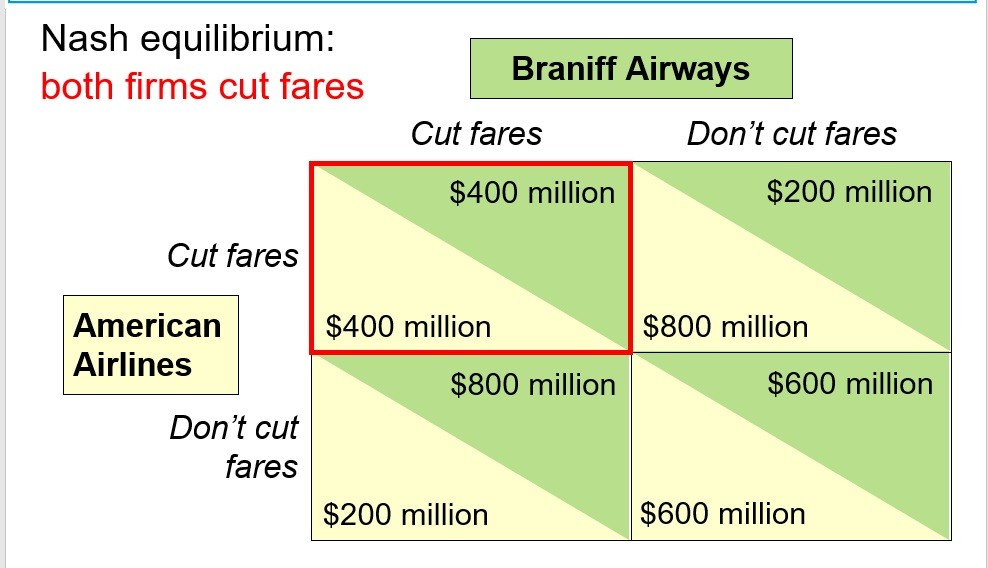What Is Nash Equilibrium and Why It Is Important?

Understanding Nash Equilibrium: A Key Concept for Business Strategy
In the world of business strategy, understanding how competitors and consumers will react to your decisions is crucial. One concept that can provide insight into these dynamics is the Nash Equilibrium, named after mathematician John Nash. While it originally emerged from game theory, this concept has profound implications for businesses looking to strategize effectively in competitive environments.
What Is Nash Equilibrium?
Simply put, Nash Equilibrium occurs when all participants in a situation or game choose the best possible strategy for themselves, given the strategies chosen by others. At this point, no one has anything to gain by changing their strategy unilaterally. Everyone is essentially “stuck” in their positions because any deviation would result in a worse outcome.
For example, consider two competing businesses, both deciding on pricing strategies. If both set their prices high, they might maintain a profitable margin, but they risk losing customers to the competitor. If both set their prices low, they could attract more customers but at the cost of lower profits. If one business sets a high price and the other a low price, the lower-priced business will likely capture a larger market share. The Nash Equilibrium in this scenario might occur when both businesses settle on a pricing strategy where neither can improve their position by changing their price alone, knowing the other’s price.
Real-World Example: The Gas Station Conundrum
A practical illustration of Nash Equilibrium can be observed in the clustering of gas stations. Have you ever noticed that gas stations often seem to pop up next to each other? This isn’t a coincidence; it’s a strategic move based on anticipating competitors’ decisions. If one gas station opens in a prime location, others are likely to follow. If a second gas station opens a bit further away, it risks losing customers who prefer the convenience of the first. So, instead of spreading out, they cluster together, knowing that their competitors are doing the same. This clustering is an example of Nash Equilibrium, where all stations end up close to each other because any other location would be less profitable.
Why Nash Equilibrium Matters for Businesses
Understanding Nash Equilibrium is crucial for businesses because it can help predict competitor behavior and market outcomes. When entering a new market, launching a product, or adjusting pricing, businesses need to anticipate how competitors will respond. By analyzing potential equilibria, companies can choose strategies that maximize their potential for success.
For instance, if you’re entering a market where price competition is intense, knowing the likely equilibrium can help you decide whether to compete on price, differentiate your product, or even avoid the market altogether. Similarly, understanding equilibrium can guide decisions about marketing, product features, and customer service strategies.
Strategic Implications: Leveraging Nash Equilibrium in Business
For businesses, the concept of Nash Equilibrium emphasizes the importance of strategic thinking. Rather than acting in isolation, companies must consider the broader competitive landscape. Here’s how businesses can leverage Nash Equilibrium in their strategies:
Anticipate Competitor Moves: Before making strategic decisions, think about how competitors will react. Will they lower prices, launch a new product, or ramp up marketing efforts? By considering these reactions, you can choose a strategy that leaves your competitors with few options to counter effectively.
Market Positioning: If you’re entering a market with established players, understanding the equilibrium can help you position your product or service in a way that minimizes direct competition. This could mean focusing on a niche segment or offering a unique value proposition.
Pricing Strategies: Pricing is a critical area where Nash Equilibrium applies. In a highly competitive market, finding the right price point that balances profitability with market share can be challenging. Understanding the equilibrium helps in setting prices that are competitive yet sustainable.
Collaboration and Agreements: In some cases, businesses might find it beneficial to collaborate rather than compete directly. This could involve forming alliances, sharing resources, or agreeing on certain market practices. Understanding the equilibrium can help identify when such collaborations make sense.
Conclusion: The Strategic Edge of Nash Equilibrium
In today’s complex and competitive business environment, understanding and applying the concept of Nash Equilibrium can provide a significant strategic advantage. It helps businesses anticipate competitor behavior, optimize their strategies, and ultimately, achieve better outcomes. Whether you’re setting prices, launching a new product, or planning market entry, Nash Equilibrium offers a powerful framework for making informed and effective decisions.
As you navigate the challenges of the business world, remember that success often comes not from acting in isolation but from understanding and strategically responding to the actions of others. By incorporating Nash Equilibrium into your strategic toolkit, you can better position your business for long-term success
